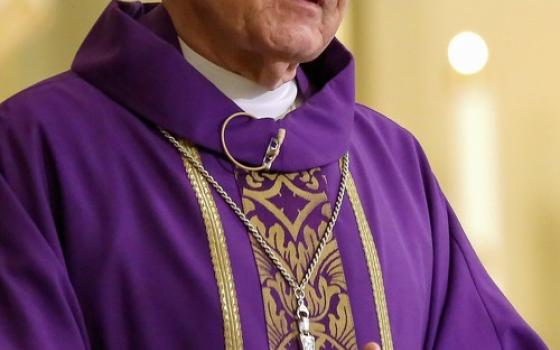
A funeral Mass for Anita Caspary will be celebrated at 9 a.m. Saturday at Immaculate Heart High School in Los Angeles.
Caspary played a decisive role in post-Vatican II church history when her renewal-directed community ran up against the dictates of conservative Los Angles Cardinal James Francis McIntyre, leading to the community's canonical separation from the church.
Caspary died Oct. 5 surrounded by her family and community members, according to an announcement on her community's website. She was 95.
The Immaculate Heart of Mary of California community, which Caspary formerly led, was quick to implement its mandate for religious renewal. The community instituted changes to religious garb, prayer schedules, ministries and governance, which eventually became common among women religious communities in the decades that followed.
In Los Angeles in the late 1960s, however, the changes rocked some clerics, including the local ordinary. McIntyre ordered the women to stop the reforms. He insisted they obey his commands, and when they refused, he ordered them to stop teaching in diocesan schools.
Sister of St. Joseph of Peace Dorothy Vidulich, a former NCR Washington Bureau Chief, once drew attention to the importance of the conflict, calling it "the first major test" between American women religious and the Vatican over models of authority and leadership.
She explained the conflict this way: "The community had rejected a life pattern that had to conform to canons issued by male clerics of another culture." In turn, they "recognized the role of authority as service and emphasized co-responsibility."
Eventually, the controversy prompted a representative from the Vatican Congregation for Religious and Secular Institutes to demand that women religious leaders gathered in a 1969 assembly refrain from passing a resolution supporting the Los Angeles community. After a hotly contested debate, the resolution failed by one vote.
In December 1969 at an Immaculate Heart community meeting, more than 300 sisters voted to become a non-canonical community, thereby freeing themselves of Rome's control, Vidulich said. About 50 sisters continued the traditional community under official Vatican recognition. Caspary once recalled that establishing a voluntary lay Immaculate Heart Community "relieved us from threats and difficulties with the church under which we lived at that time."
Caspary said the change "gave us the freedom to be self-determining and to make moral choices on the basis of conscience without leaning on the authority of others." She said this is "the same struggle for feminist values that continues for women in all walks of life today, especially for women in the church."
Many Immaculate Heart members remained in education; others went into law, social work, parish ministry, inner-city development, the arts and the administration of public and nonprofit organizations.
Today's community is made up primarily of Catholic women, but it also includes men and people of different faith traditions who make an annual commitment of "time, talents and treasure" to the Immaculate Heart community.
In 2003, Caspary published an account of the turmoil called "Witness to Integrity." Benedictine Sister Joan Chittister, in an NCR review, wrote that the issues involved went well beyond Los Angeles.
"The issues were authority and vision," she wrote.
"It was just for the community to embark on a program of experimentation and renewal. Since the community was not organized as a diocesan congregation but fell under pontifical jurisdiction, it was not just for the archbishop of Los Angeles to assume power over their internal affairs.
"Justice was on the side of the sisters, but the cardinal's power to maneuver the system won out in the end. As a result, the Catholic school system in Los Angeles lost over 250 teaching sisters overnight and the community split into three major parts. Better to lose a community of women than to irritate a cardinal, apparently. In the end, Macintyre himself lost the good reputation other works of his must surely have deserved.
"Witness to Integrity demonstrates what happens when one part of the system sets itself above what committed people in another part of the system know to be the demands of the gospel for them. Indeed, the IHM Community itself is still together, even if not canonically recognized. And yet, 35 years later, the church still resists the inclusion of women, the counsel of lay people and the coming of a new day in ecclesiastical structures."
Fox is NCR Editor.




